reviewed by Truman Perkins
A popular question, Can hibiscus grow indoors of any variety in your home? I say a resounding yes.
With the right environment provided, you can grow hibiscus in your home. Some types will be easier than others, but with proper care and consideration, you can have a beautiful hibiscus in your indoor garden space to enjoy.
Not everyone is fortunate enough to live in the tropical or warmer southern climates required to keep the magnificent hibiscus plant growing. Although many tree and bush varieties have been adapted to cooler temperatures, showy tropical varieties can elude many of us.
There are very few flowers that offer the diverse showmanship of hibiscus flowers. Besides, hibiscus offers many medicinal properties that can harvest to your benefit, including regulating blood pressure, treating high cholesterol, improving immunity, and helping cure liver disease.
This article can help you learn how to successfully grow hibiscus in your inside garden. The different types of hibiscus that are available, and the specific needs that these varieties will need.
Contents
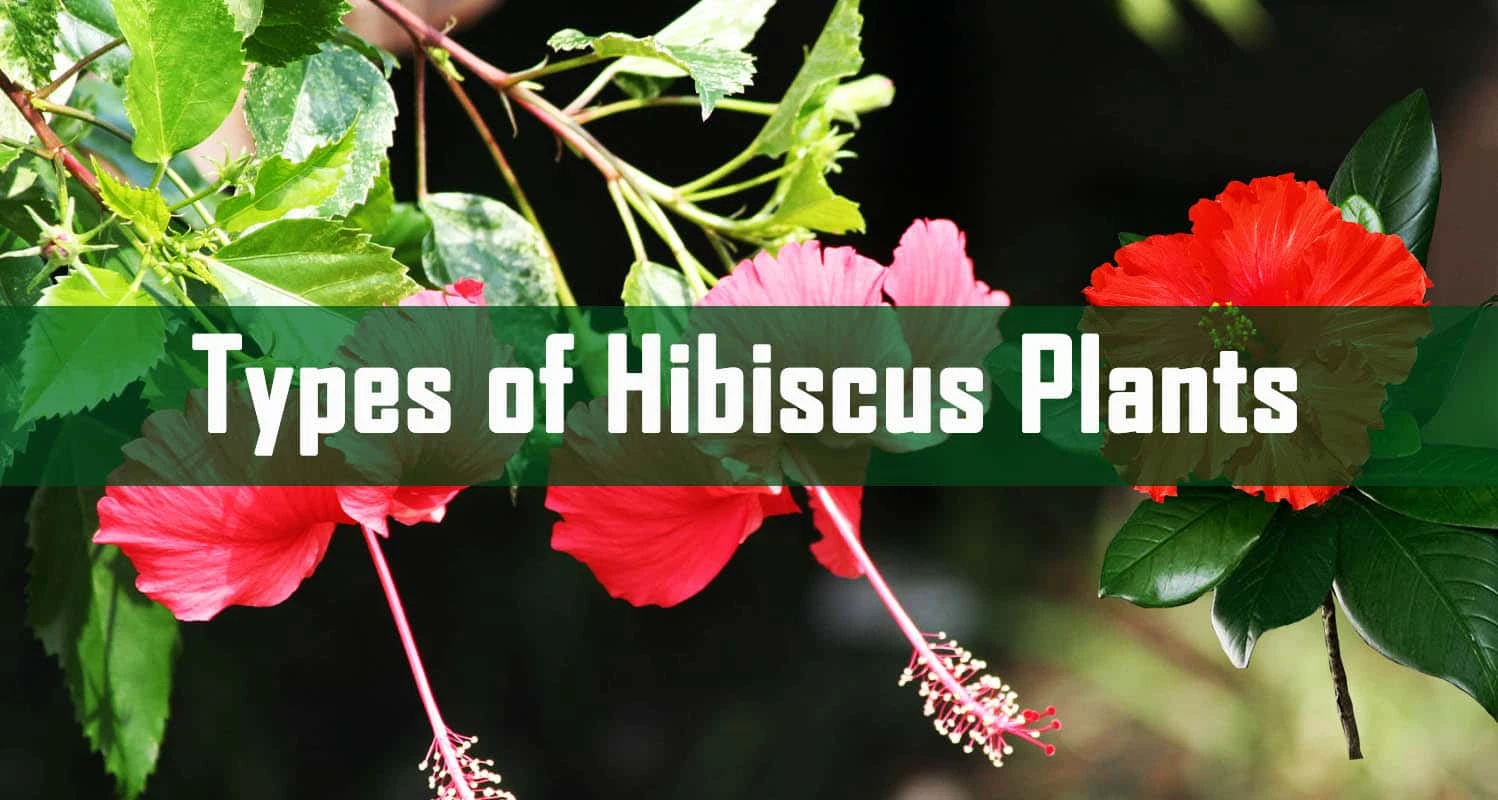
Hundreds of hibiscus plants are available, ranging in type, color, size, and ideal regions. The wide variety stems from many hybridized variations that have been created throughout the years to enhance and improve the flowering and growing capabilities of this fantastic flower.
The hibiscus varieties can be broken down into two main types and smaller subcategories that individual types can fall into. Those primary types are Hardy (Hibiscus spp.) and Tropical (Hibiscus rosa-Sinensis).
As the name implies, tropical hibiscus is native to the low or warmer areas of the world. They are commonly seen growing in beautiful picturesque scenes of lovely island retreats like the Bahamas and Hawaii. They also grow in permanent landscapes of those living in USDA plant hardiness zones 9 through 11.
Tropical hibiscus leaves stay green all year, and they do not fall off, making them an evergreen plant. This variety typically can grow to 4 feet in height minimum but upwards of 10 feet in height depending on type and condition. When adequately grown and pruned, they are a full-plant and can get 4 to 8 feet in overall width.
Bloom sizes and color vary depending on the subspecies or hybridization of this hibiscus type. Tropical type hibiscus has many flowers spread throughout the plant in single and double layers. These flowers are shorter-lasting, typically only living a day to two after full bloom. Typical 3 to 4-inch petals in reds, pinks, salmon, peach, yellow, and orange shades.
A deciduous type of hibiscus, this variety leaves die off in the cooler months and becomes dormant in the winter. These grow in USDA plant hardiness zones 5 through 8. Even though these hibiscus plants are of the same genus type as their tropical counterparts, their care and growth habits can differ.
Some of these hardy types can grow up to a massive 15-foot height, and 8 foot spreads in width. This, of course, is determined by the variety. A greater variety of hardy types hybridized to grow for different sizes, areas, flower types, colors, and more.
This hibiscus family includes rose mallows, Sharon, giant mallows, swamp mallows, altheas, and other variations on these varieties. These varieties can be a little slow to start from seed, especially in cooler weather, but this is a fast grower once they get going. Proper planning is needed when considering the planting container or environment for this potentially sizable plant.
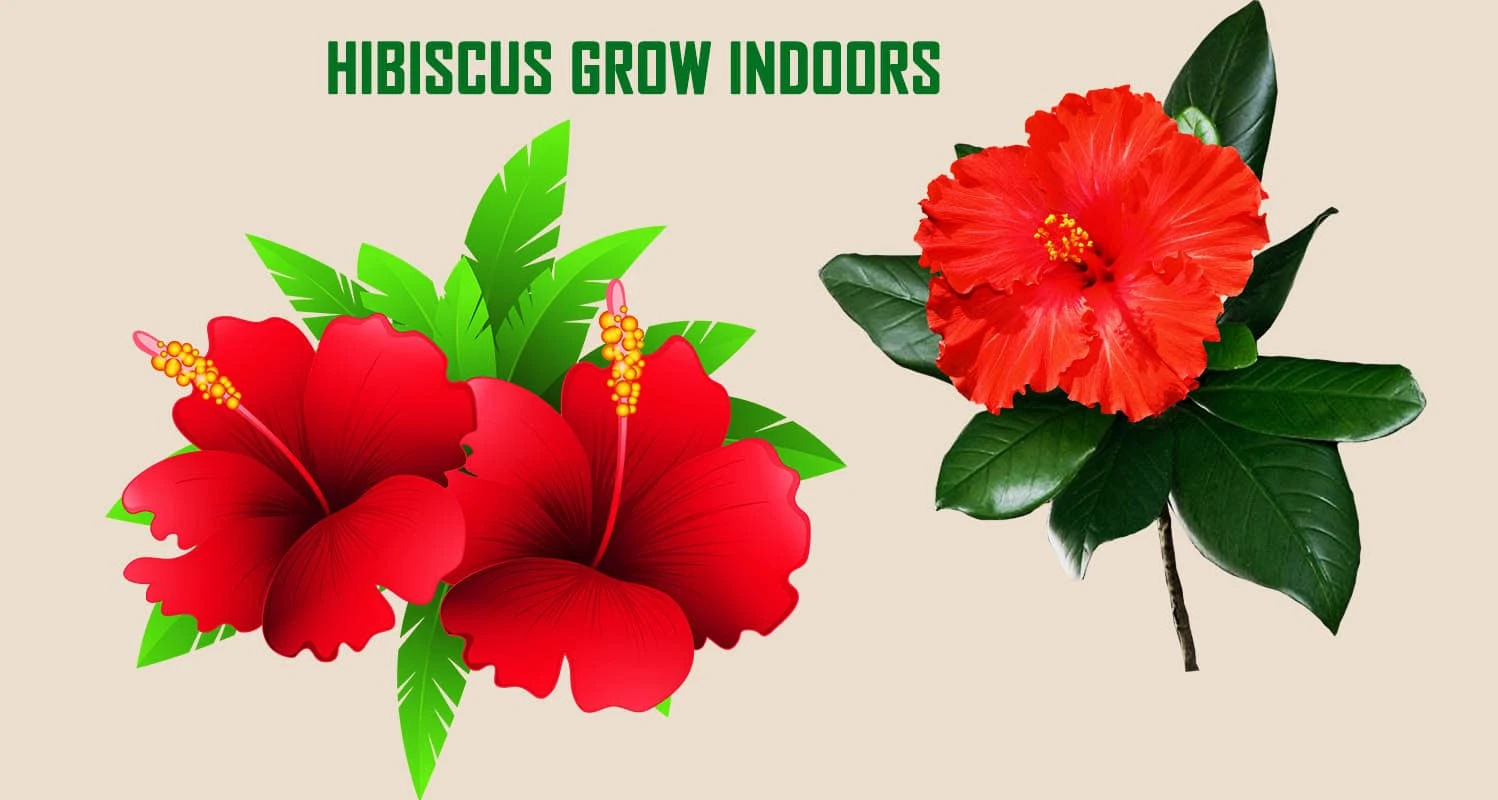
The family of hibiscus plants in this variety will grow indoors well when supplied with the proper care. This variety needs attention to temperatures and humidity that match its native growing environments. Keep in warmer climates in the home away from dry-producing heat.
Mist daily to provide humidity or grow in an area of the home where you set up a humid environment with a humidifier. These types do not die off in the winter, so if overwintering indoors, be sure to keep it thriving and fertilized to prevent health issues.
Lots of light is a must, 10 to 12 hours a day minimum. If you do not have that light naturally, as most of us will not in the winter, you will need a grow light to supplement this plant’s lighting needs.
Choose your variety wisely. A rose of Sharon bush gets very large and is not recommended to be grown indoors. Space would be far too limited to the growth potential of this beauty. However, there are more minor varieties that would be better suited for your indoor space.
Some store-bought plants of this variety are treated to stunt growth when this has worn out; you may have more plants than you bargained for. Research the type before deciding on your intended space. Light is essential for the blooming to occur and the number of blooms you will receive from your plant.
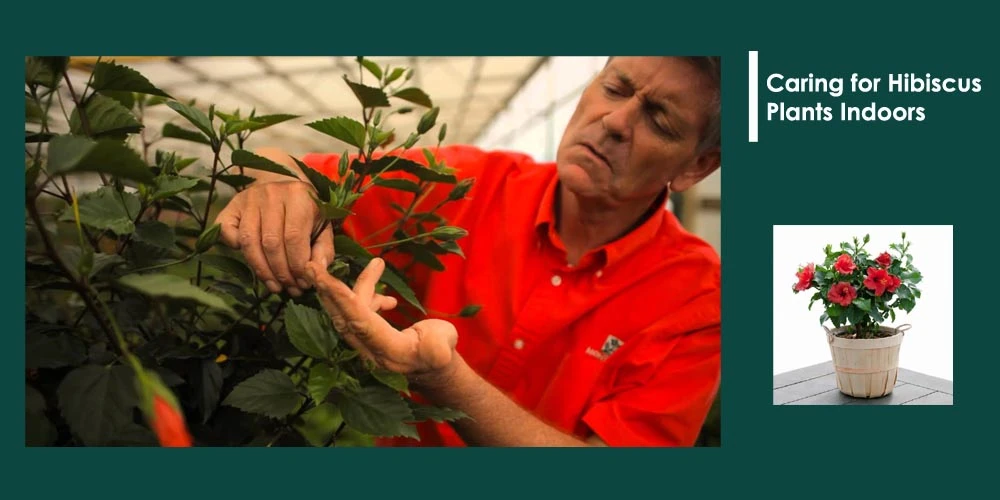
Hibiscus is a beautiful plant that creates a great showing in unique colorful blooms that can create an excellent addition to your interior décor and garden space. The hibiscus has many medicinal and culinary uses that make it a valuable addition to an herbal garden.
With this double benefit, who would not want to try to grow hibiscus indoors?
It will not be the easiest plant you have grown indoors, but it is possible, and with the proper care, you will have great success.
Hibiscus, especially the topical variety, requires a lot more light than the typical houseplants or herbs you grow indoors; if you are looking for blooms from your plant, you need to provide light of some kind to even have a chance at flowering.
A very common question I am asked: “Can hibiscus grow indoors and still produce blooms?” They need light to bloom. If you provide the right light you will get flowers!
A tropical hibiscus requires a minimum of 10 to 12 hours of sunlight or supplemental light each day, 16 hours for maximum growth potential indoors and prolific blooming. This is not likely to be provided by even south or southwestern windows, especially in the winter months.
Hardy hibiscus will tolerate some lower light conditions but will need sunlight to promote blossoming. If you have a bright southern window or southwest window, a hardy-type hibiscus may do well in this area. Watching the growth pattern and bloom will help you determine if they are getting enough light.
Grow lights are recommended for this variety of plants grown indoors. They need to provide both blue and red light spectrum to promote healthy leaf and flowering growth. There are many options available for grow lights that can easily fit into most indoor spaces.
» For a single plant or couple of hibiscus plants, I highly recommend this affordable simple grow light option that works on a built-in timer to get the proper light to your plant. Follow this link Lovebay Timing Function Dual head Grow light 36LED 5 Dimmable Levels Grow Lamp Bulbs with Adjustable 360 Degree Gooseneck.
» For more information about grow light and how they function to see this article previously posted on-site by clicking here The Best Grow Lights for Indoor Plants
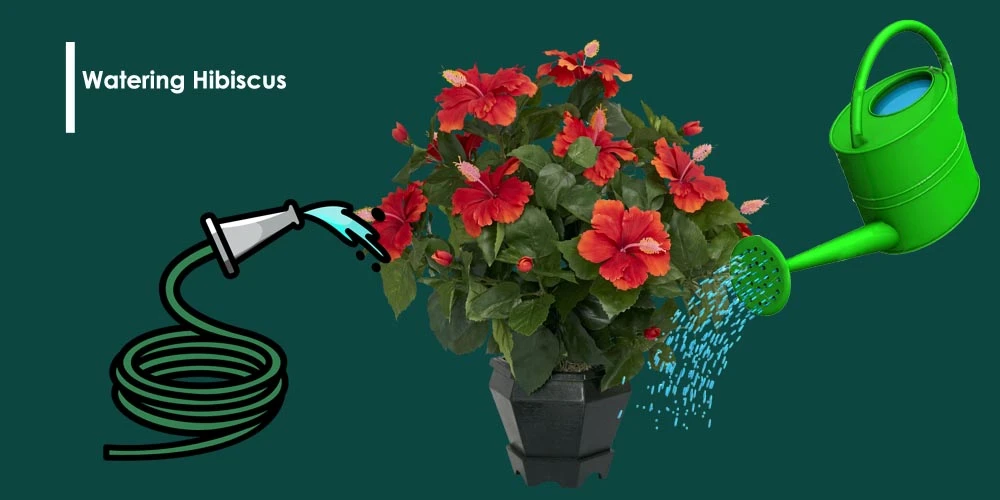
Neither variety of hibiscus likes ever to be dry. Keeping consistent watering on your plant is going to be essential. Proper draining soil will help ensure adequate watering. See soil requirements below.
Keep the water level at the soil evenly moist to the touch. Do not drown the roots out by flooding, but the soil should always have a damp, cool touch to it. WTheexcess should drain easily from the soil when watering o that the roots do not sit in swampy ground. This is called wet feet. This will rot the roots.
The exception to this will come from unique hybrid varieties meant to grow in a more arid environment. There are a beautiful lilac hibiscus and a Texas variety that are tolerant of drier conditions once established.
Tropical hibiscus will not like being watered with cool temperature water. Use lukewarm water or water that has been allowed to come to room temperature.
My go-to soil pick for most of my indoor container plants works wonderfully for hibiscus plants as well. Its rich organic matter and well-draining construction keep the proper moisture levels in a light loamy mix that plants love.
» I almost always recommend this blend—the Fox Farm Ocean Forest organic mix. You can read a detailed review here and decide for yourself. Fox Farm Soil Review
Hibiscus should be re-potted yearly or at least bi-annually. It will quickly drain the nutrients from its existing soil and prospers from a regularly scheduled re-pot as a heavy feeding plant.
I like to do mine just before they would typically go into their productive phase in early spring. If it is a hibiscus, I move in and out for overwintering. I will do a re-pot when bringing it inside to decrease soil-born pest issues.
Tropical hibiscus will require higher minimum temperatures than their hardy hibiscus counterparts. The standard type will not tolerate temperatures dropping below 50 degrees but ideally, you want to keep them consistent at 65 to 80 degrees. Your winter home temp is likely to set to 70 degrees or roundabout. That will be an ideal heat. The light in the daytime hours, incredibly a grow light, will increase the plant’s ambient heat to the perfect metrics during the day’s peaks to grow.
Take caution next to any windows that can create cold air drafts. They will quickly kill off your tropical-type hibiscus.
Hardy-type hibiscus is more tolerant to temperature extremes because they are perennial and want to die off in the winter and come back. You can allow them to go dormant and lose their leaves by moving them into a more relaxed, less light space in the winter months, or you can keep them in a constant steady temp and grow them as an evergreen. Proper pruning will be essential to keep them from getting overgrown and promoting new growth.
Hibiscus enjoys regular misting and higher levels of humidity. This is important to remember in the wintertime if you’re running a dryer heating source without a humidifier.
Most plants in your indoor garden space can benefit from regular humidity. Hibiscus needs it to thrive. It will help to keep it strong and healthy.
Ways to add humidity
The planting container for your hibiscus will need to be able to hold up to the size of the plant as it grows. This will depend a lot on the variety; you will need to refer to specific species for unique potting specifications.
In general, the container for your hibiscus should be at a minimum of 8 to 10 inches in diameter or equivalent if square. The depth should be 8 to 12” for smaller varieties and deeper for larger bush-type mallows and some tropical.
The container should have drainage holes to allow for access water to escape. I recommend staying away from dark-colored pots if you intend to move your hibiscus outdoors in the summer. This could cause your plant’s roots to overheat.
Hibiscus of both main varieties has fertilizer needs. These increase when grown indoors due to being raised in containers. Container-grown plants tend to strip the soil of nutrients quickly and will need them regularly replenished with fertilizer additives.
Blooming plants also have different fertilizer needs than green-type herbs or even vegetable-producing plants. It is essential to hit the right balance to get the nutrients specific to your plant. The types of fertilizer can also impact flowering color and pigment strength in your blooms. Potassium levels in flowering plants, especially hibiscus, affect the bloom colors and strength.
I recommend fertilizing your ingrown hibiscus plants that are not in the dormant stage every other watering cycle with a diluted fertilizer designed explicitly for hibiscus. If you are overwintering a plant, cut this down once a month and increase just before preparing for spring.
» I highly recommend an excellent organic fertilizer that is pet safe and not harmful. I have a lot of luck with this fertilizer for hibiscus and other flowering plants. Grab yours here, Dr. Earth Exotic Blend Palm, Tropical & Hibiscus Fertilizer Polybag, 4 lb.
This can be the scariest undertaking for most gardeners. It can be hard to think of trimming off healthy-looking growth or even flower buds starting to emerge. Unfortunately, if you want a bushy well-flowered hibiscus, pruning is a must.
Regular deadheading, trimming off spent flowers will help keep new flower growth during active periods.
» Here is an excellent article about proper pruning of hibiscus that you may find helpful in deciding how and when to trim your plants. Prune-Hibiscus on Wikihow
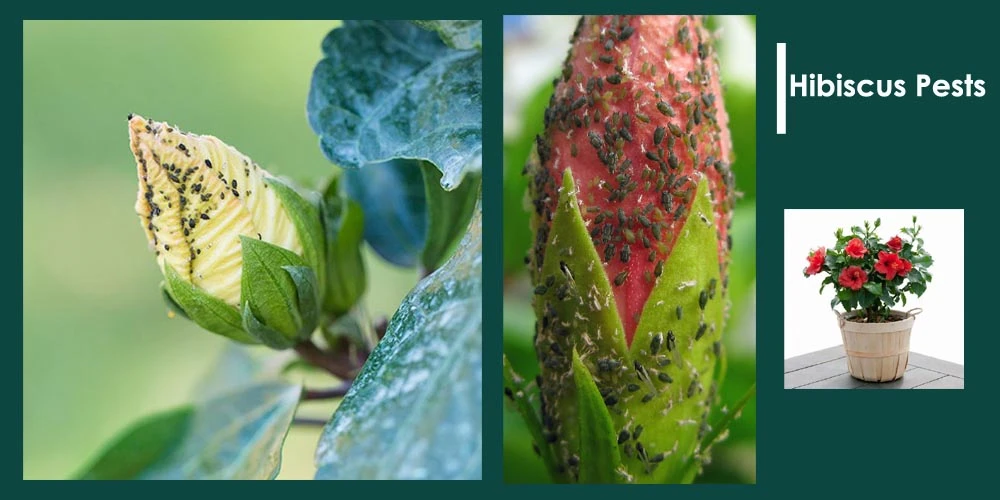
Hibiscus can be sensitive to bug and pest infestations. The best treatment is always prevention. The best prevention is a healthy, well-maintained plant.
A healthy plant is less appealing and better able to handle a pest attack. Following all the above instructions on care will help to ensure the best possible health for your plant.
Even with very healthy plants, those annoying bug infestations manage to find their way in on occasion.
Hibiscus is susceptible to many pests. Aphids, whiteflies, spider mites, and others can be problematic for these beautiful plants.
I always recommend taking an organic approach first to any infestations that infect your garden. Most of the garden plants you are growing may be consumed, and you do not need residual chemicals that could poison you. Also, if you have pets in your home, you are putting them at risk.
When treating pest infestations, inspect all your plants. Separate those that need treatment from the rest of your garden, even if you intend to treat them all. You do not want any escapees jumping from one plant to another and survive.
Investigate the exact pest you are dealing with and address it specifically. There is no one-all solution to all pest issues. You could end up overtreating your plants and causing them more harm than good if you are not treating the real problem quickly and precisely.
Below you can follow any of the links from Amazon to products I recommend for specific issues regarding pests in the garden. My most frequent indoor pests have always been fungus gnats, usually brought in from store-bought plants. I solved that with the last item on the list, the ultrasonic lights. I was shocked at how well they worked to eliminate that nightmarish pest problem.
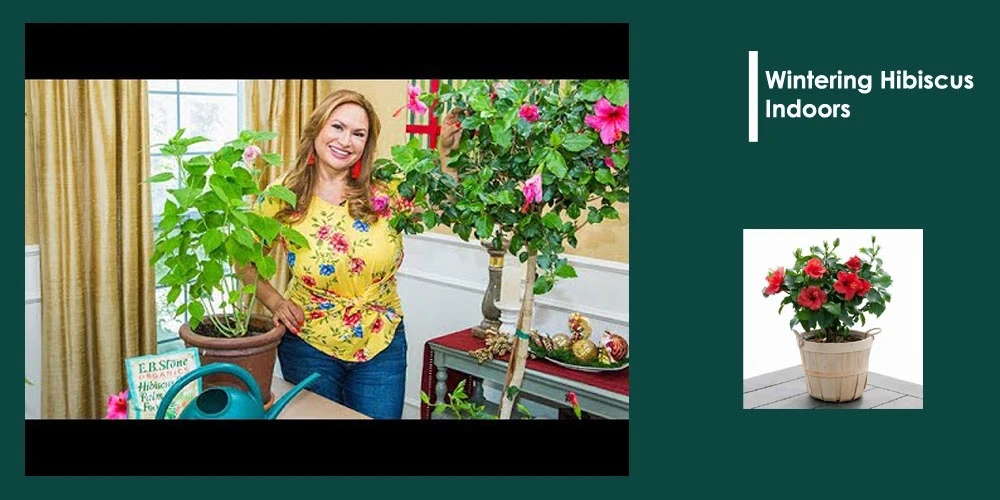
I want to make a special note if you intend to bring your hibiscus indoors in the winter and back out in the summer. I do this for most of my larger hibiscus plants as well and several of my other plants.
A word of caution. The world outside is filled with bugs and pests that your indoor environment is not used to. They also have predators that help to eliminate them. If you bring those plant pests indoor, they will have no enemies. They will soon overtake your indoor gardens.
How can you protect and safely move your plants indoors?
Growing hibiscus indoors or out can be very rewarding. The flowers can be awe-inspiring. I love the array of flowers you can get from the many different hybrid varieties of the hibiscus family.
My favorites are the reds, which to me represent the classic, familiar association of hibiscus. I have always thought of what I think of the tea or drinks with this floral flavor.
What is your favorite type of hibiscus? Is it from the tropical hibiscus family, or are you more fond of the hardy mallow-type hibiscus?
Let’s talk hibiscus! Drop me a comment below and tell me what you are growing or what you want to grow?
If you have any questions, please do not hesitate. I am here to help.
Happy Gardening, friends!
 |
 |
 |
 |

About Truman Perkins
Truman Perkins is a Detroit-based SEO consultant who's been in the business for over a decade. He got his start helping friends and clients get their websites off the ground, and he continues to do so today. In his free time, Truman enjoys learning and writing about gardening - something he believes is a natural stress reliever. He lives with his wife, Jenny, and their twins in Detroit.
 |
 |
 |
 |
Check These Out
Get new FREE Gifts. Or latest free growing e-books from our latest works.
Disable Ad block to reveal all the links. Once done, hit a button below
 |
 |
 |
 |